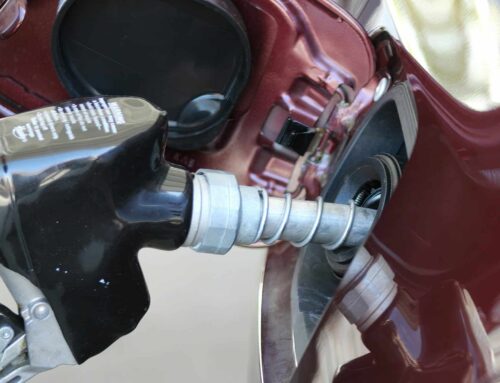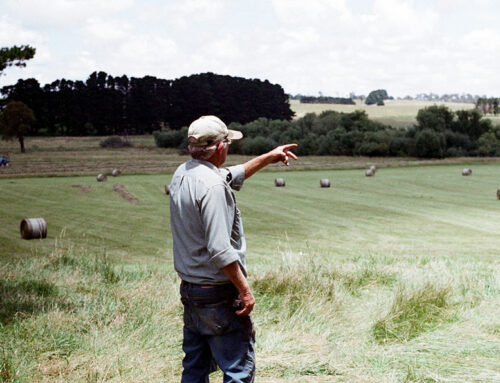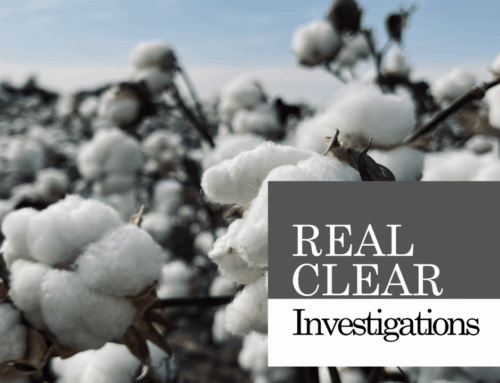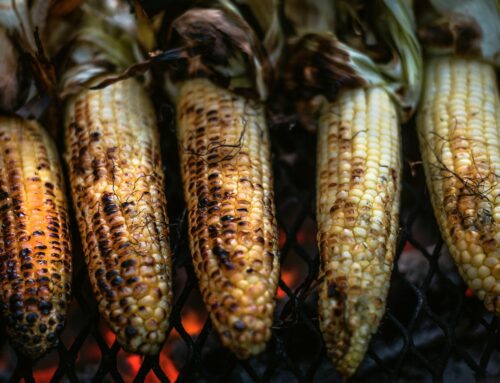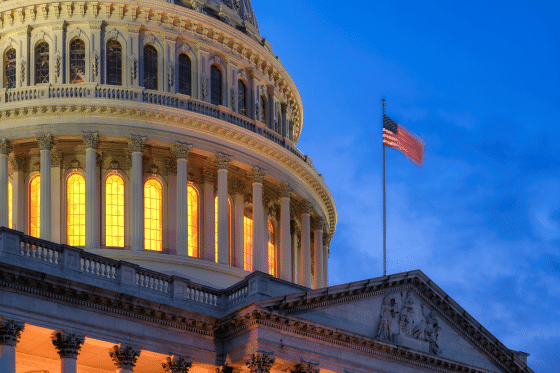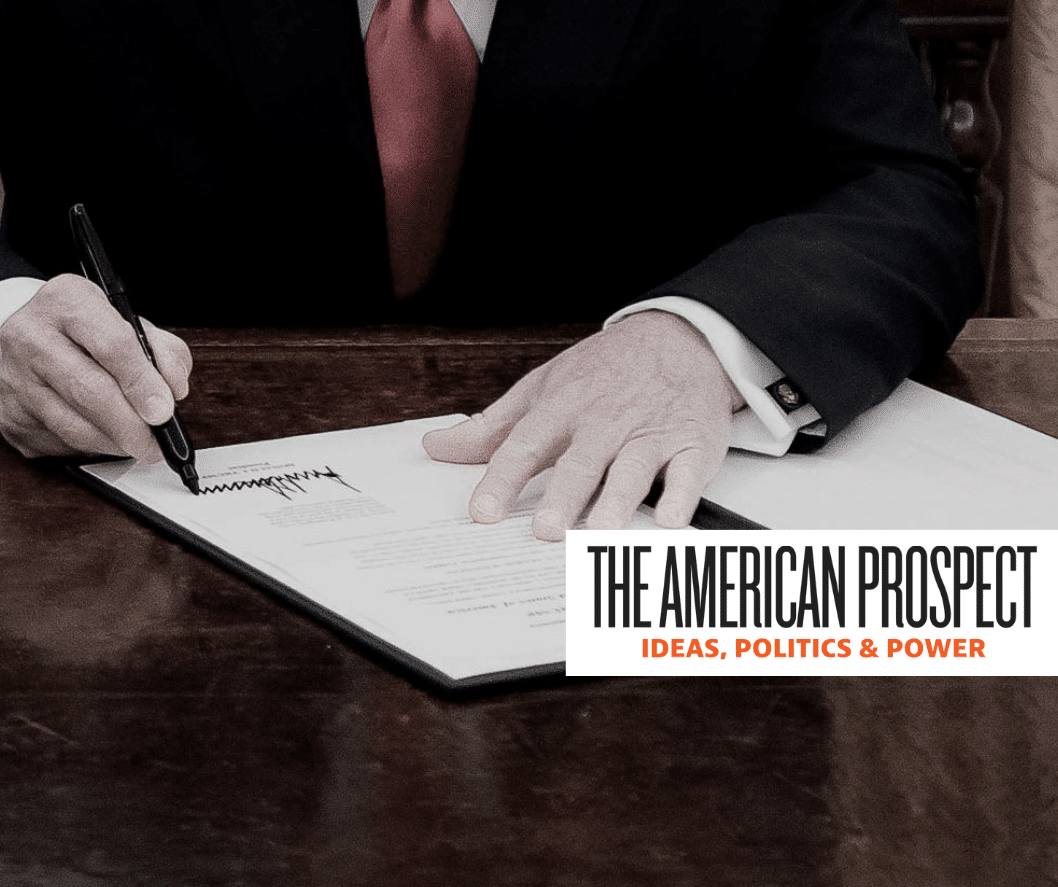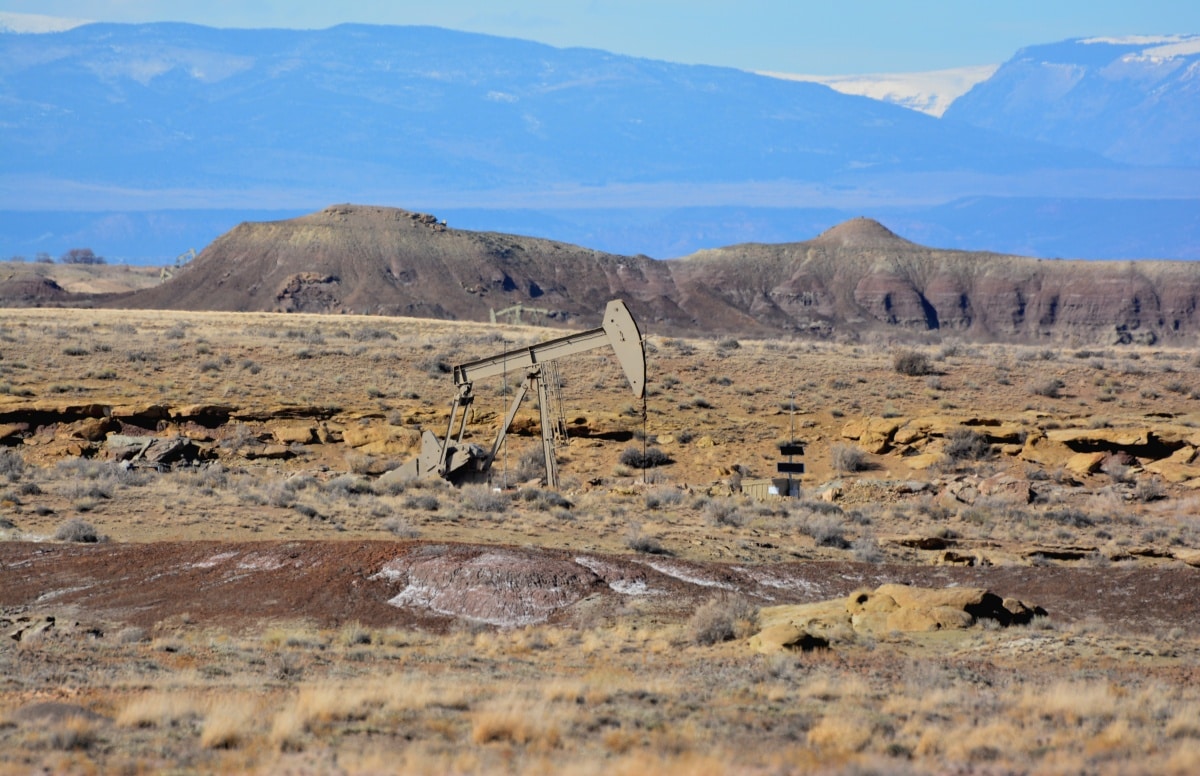Are America’s green fields lined with taxpayer dollars? In this episode of Budget Watchdog AF, host Steve Ellis and TCS Ag experts, Joshua Sewell and Sheila Karpf plow fertile ground with a very special guest. Dr. Joe Glauber served as Chief Economist at the US Department of Agriculture from 2008-2014, and in total, spent more than 30 years at USDA. Hit play and hear how much more is in the Farm Bill than you probably realized.
Read more on the subjects discussed in the episode:
- Cost of Farm Bills Continues to Skyrocket
- 2023 Farm Bill: Putting Common Sense Ahead of Special Interests
Listen here or on Apple Podcasts
Episode 22 – Transcript
Intro:
Welcome to Budget Watchdog All Federal, the podcast dedicated to making sense of the budget, spending, and tax issues facing the nation. Cut through the partisan rhetoric and talking points for the facts about what’s being talked about, bandied about, and pushed to Washington. Brought to you by Taxpayers for Common Sense. And now, the host of Budget Watchdog AF, TCS president Steve Ellis.
Steve Ellis:
Welcome to all American Taxpayers Seeking Common Sense. You’ve made it to the right place. For over 25 years TCS, that’s Taxpayers for Common Sense, has served as an independent nonpartisan budget watchdog group based in Washington, DC. We believe in fiscal policy for America that is based on facts. We believe in transparency and accountability because no matter where you are on the political spectrum, no one wants to see their tax dollars wasted. It’s Tuesday, May 31st, 2022, and well, maybe it’s patriotism and the reverence of Memorial Day talking, but God bless America. As I was preparing for this special episode of the podcast, I found myself considering the opening words of America the Beautiful, and because I care about you, my dear podcast listeners, I won’t sing, but the song begins, oh beautiful for spacious skies, for amber waves of grain, for purple mountains majesties above the fruited plain.
Steve Ellis:
It speaks to the heart of our nation’s great agricultural legacy and the responsibility of stewardship that falls on the federal government, and yes, taxpayers. The rubber meets the policy road with the farm bill and today we’re plowing fertile ground with a very special guest. Dr. Joe Glauber served as the chief economist at the US Department of Agriculture from 2008 to 2014 and in total spent more than 30 years at USDA. He’s now a senior research fellow at the International Food Policy Research Institute, and also serves as a non-resident senior fellow at the American Enterprise Institute, focused on agriculture policy. Dr. Glauber, welcome to our podcast.
Joe Glauber:
Thanks very much, Steve. Good to be here.
Steve Ellis:
Joe. We are so pleased that you could join us for this podcast, and there’s no way that we could do this show without TCS’s ag experts, Joshua Sewell and Sheila Karpf. Josh, it’s finally happening, Glauber, the farm bill, you’re in a hog heaven. Aren’t you buddy?
Josh Sewell:
That’s right, Steve. I think about ag policy every day and so should everyone. I think we’re in really good company today with Dr. Glauber. Anyone who’s listened to this podcast knows I bring up the farm bill literally on every podcast I’m on somehow. Having one dedicated to the next farm bill debate to discuss how to reform the ever expensive and ever expanding farm safety net. I literally can’t be more excited.
Steve Ellis:
Sheila, you’ve got Josh’s back when he isn’t on the podcast and bring it up in his stead and unlike the rest of us, you’re in Nebraska in the heart of farm country. Welcome back, Sheila.
Sheila Karpf:
Thanks so much, Steve. It’s great to be back and great to be talking ag policy as usual.
Steve Ellis:
Absolutely. Well, let’s get going. Well, I don’t have the history of Dr. Glauber. I’ve been at TCS for four farm bills and we’re in the run up to the next reauthorization in 2023, my fifth, the 2018 bill will expire at the end of fiscal year 2023. Joe, can you please give our listeners an overview of the farm bill and why taxpayers should care about it?
Joe Glauber:
Steve, the farm bills have been around for a long, long time. We go back to the early 1930s with all the New Deal legislation that was passed in that decade. That was all seen as temporary spending to help get the farm sector, which was at the time, had very poor income relative to the rest of the economy. They provided this emergency spending. Well, here we are, how many years later? And we still have farm bills. In fact, they’ve grown to be quite large. Every five or so years Congress comes back, debates and passes a piece of farm legislation known as the farm bill and it’s grown a lot rather than just covering specific commodities or various things dealing with the agricultural sector. It also has a lot of conservation programs, has a lot of general programs on rural development, research and development and it’s the largest component of the nutrition programs. Things like the SNAP program, the old Food Stamps Program.
Josh Sewell:
Joe, you mentioned SNAP and nutrition program costs, including SNAP are way up. This is a hold over a little bit from the pandemic expansion, but also it seems primarily food costs are way up due to inflation. I’m curious, you have inflation and administrative changes and legislative expansions have made nutrition programs more expensive. You also have high commodity prices. It means some of the farm program spending is lower than it was originally projected when this farm bill was authorized in 2018. At the same time, the farm groups are crying poor, even though they have high to record incomes because of the input costs for them. How do you see all these new spending projections from the most recent CBO baseline playing out in the farm debate?
Joe Glauber:
It’s a great question, Josh, and as you say, these programs evolve a lot over time and because so much of these programs are so called mandatory spending, that is they are authorized in legislation and Congress essentially authorizes most of these programs with such sums as necessary. If they agree that they’re going to guarantee some price for farmers, well, it doesn’t matter how low prices fall. They will guarantee that price so that in one sense, those program spending levels are almost limitless. Obviously, there are certain limits at the end of the day of how far they can actually arise. If you take something like SNAP, when I first began, my career in SNAP was in the order of 20 billion a year. It’s grown exponentially, particularly back to 2009, when we had the big recession. There was an effort made to try to reach more families. That is families that weren’t participating in the SNAP program, but were eligible.
Joe Glauber:
There were some good outreach programs at the time, which is helpful obviously for maintaining a safety net, but what that’s meant is that program spending, oh, I’d say three or four years ago, program spending was on the order of about 70 billion a year. Now it’s on the order of about 110 billion a year. The most recent CBO baseline projects, SNAP expenditures over the next 10 years to be $110 billion a year and that’s compared to the commodity programs, which now are about 20 billion the overall the so-called farm safety net average around $21 billion a year.
Joe Glauber:
That’s broken up roughly in three separate pots, you have commodity credit corporation, the so-called price and income support programs. They average about 7.1 billion a year. Conservation programs, which grew a lot during the 2000s and 2000 teens. That’s average in about $5.9 billion and then crop insurance. Again, another program that was almost non-existent 25 years ago. Now it’s the largest single program in the farm safety net. That average is about eight billion. You total those three up around 21 billion, you have the nutrition programs at about 110 billion. Roughly $1.3 trillion over the next 10 years. That’s a lot of money.
Josh Sewell:
It is a lot of money and we’ve been diving into this CBO baseline, which is what we do every time it comes out. I have to say, it seems a little complicated for us to try to understand what is the actual cost of the safety net and what is the likely future cost. I just wonder if you can talk a little bit about how the farm subsidy programs as you mentioned in the mandatory baseline compares to some of the other ways we are subsidizing the farm safety net outside of the farm bill process?
Joe Glauber:
Couple of things. Obviously, the ag budget itself is much, much larger if you include all the other pieces of the farm bill better subject to annual appropriations. I think if you look at current year budget for USDA, if you total up all the so-called discretionary spending, that’s subject Daniel Appropriations plus the mandatory component, that’s about $261 billion. It’s a lot and that breaks down to about 70% of that nutrition spending list SNAP program, and other things, school lunch, all the other type of programs oriented towards nutrition. About 14% or so are the farm program, the safety net programs that I just mentioned, and then about 5% forestry and another 10, 11% miscellaneous, which include a lot of things that probably the interface that a lot of people have with USDA, the APHIS, which does the animal plant health inspection service. You have livestock, food safety inspection service.
Joe Glauber:
You have a whole host of agencies that are very big in the regulatory world in terms of regulating the food supply and other things, and those cost money. That’s about 11% of it. In addition to all of that over the years we’ve had, of course, Congress has come in and past supplemental legislation that’s provided things like disaster aid to farmers, that at times has been quite large. Over 2018 to roughly 2021, we also saw both the Trump administration and the Biden administration utilize the commodity credit corporation act, which is a piece of legislation dating back to the late 1930s that gives the secretary some discretion in terms of providing additional assistance to farmers.
Joe Glauber:
The Commodity Credit Corporation Act is essentially used to finance these farm programs. It has a overall cap of around $30 billion. As I mentioned, the farm programs themselves run roughly right now around $7.1 billion are projected to run that. That leaves a lot of money that can be utilized for other things if the secretary so chooses. Now, there’s some hoops they have to go through as we saw during the Trump administration. We were up near that $30 billion cap, in fact, exceeded it in a couple of years. Those are other sources of funding that make, again, these agricultural programs very, very expensive.
Josh Sewell:
To understand the cost of the safety net is different than understanding the cost of the farm bill is a lesson we’ve learned the last few years.
Joe Glauber:
Yeah, absolutely. Farm bills, any piece of legislation, it has a cost. It has to have that cost scored versus the congressional budget office baseline. When the baseline for the upcoming farm bill will be determined next year, next spring, when CBO puts out its baseline for 2023. That will be the projected spending under the current law over the next 10 years. As we say, what gets captured in that is essentially current legislation. Congress can always come in later if they so choose to change things. Sometimes they have to come with offsets. Other times, those budgeting rules are essentially waived and they’re allowed to come in with supplemental spending. The actual amount spent over the life of a farm bill made me very, very different from what was projected at the outset.
Steve Ellis:
Well, we certainly know all about waivers and budget rules, Joe. We’ve lived through 10 years of the budget control act routinely getting a modified. Budget Watchdog AF listeners know about the Overseas Contingencies Operations Account, which was another Dodge that was used. One thing I want to go back to is these sort of ag disasters and we see disaster and climate costs rising in other sectors as well, wildfire, flood insurance, hurricanes. These costs shouldn’t be ignored or they’re going to be costing taxpayers in long run. We’ve talked a lot about that on this podcast, these future liabilities costs of not dealing with climate change. I want to go back to the ad hoc emergency spending from everything from the Ukraine response to hurricanes and a portion of these most recent bills has been for ag disasters. In 2021, $10 billion was enacted for ad hoc disaster aid, which brought total to 16 billion.
Steve Ellis:
This was completely outside the farm bill process. Even reading the legislative language is relatively vague and allows the USDA lot of leeway to implement and to send these checks out the door. Joe, are there holes in the farm safety net that require this level of ad hoc aid? If so, is there a better way to address them than through ad ho aid?
Joe Glauber:
Well, I think whether or not there’s actually a whole is subject to great debate. I think if you look at those years that these ad hoc payments were made, the ones that you just referred to, farmers had record farm income in those years. When you talk that way, it’s less of a safety net than a trampoline [inaudible 00:13:12] they ended up having pretty good receipts those years. In the case of some of the supplementals that were done prior to COVID were due to the trade war we had with China. Now China’s in a huge market for US. Agricultural products been the number one market in probably 7 of the last 10 years. Particularly for a commodity like soybeans where 25% of every acre of soybeans that’s planted, those soybeans are shipped to China. It’s just an enormous important market.
Joe Glauber:
When the trade war came, farmers had to find other markets for those soybeans and soybean prices fell as a result. The administration came back in 2018, then again, in 2019, then again in 2020 with very, very large packages. There’s a lot of controversy over were the packages more than sufficient? Were they equitably distributed. All sorts of things like that. I would say for the most part, the way the farm programs are structured, they are countercyclical. That is when prices are low, they’re aimed to give out more money. In fact, those programs have worked pretty well to meet that goal. If you think that should be the goal of farm programs. I think many people question whether or not additional funding was actually needed, but a lot of politics get caught up with actions like this, depending on what side of the fence you are. You think the other side is just who’s ever utilizing these monies or spending these monies, you think it’s very political.
Joe Glauber:
To me, I think that the supplemental spending just by no other measure than the fact that farm income was at record high, turned out to be record high levels in those years. That says to me that maybe they weren’t very well designed and overpaid farmers.
Steve Ellis:
Spoken gently like a true economist, but I will remember the farm safety trampoline.
Sheila Karpf:
I was actually just remembering some conversations I had with farmers about this issue, Joe, when you brought up the COVID spending and the trade war spending, one farmer I was talking to recently was commenting directly about the second COVID check that they received just for simply being a corn farmer and to quote the farmer. He said, the last check was like, “Why?” He’s scared about the amount of spending that’s coming out of Washington, DC, particularly for his kids and grandkids and the impact that it’s going to have on them. I’d like to go back just for a second to a disaster spending versus crop insurance spending, and even throwing in commodity spending in there. I know I put together a chart once based on probably some of these CBO numbers, looking at the amount of spending over time on all of these programs put together. You can even take the last few years of record spending out of that equation.
Sheila Karpf:
When you see the line, it really doesn’t go down that much. Joe, you were talking about how some of these programs line up over time and how as commodity prices increase, we might have higher crop insurance costs, but then in other years, as those things shift, then we have higher commodity subsidy costs. When you look at the need for disaster spending versus crop insurance, I know the talk a long time ago was that we had federal crop insurance subsidies for farmers, which you said is about $8 billion a year, so that we would negate the need for disaster spending. I’m wondering if you have any thoughts on that now where we are in 2022 versus all your time spent at USDA over those years?
Joe Glauber:
I spent a lot of time working on crop insurance, as much as I’ve tried to get away from it. At times, it keeps coming back. When I first started working on crop insurance, it was actually in the 1980s. At that time, the program had just gotten off the ground. It had been a pilot program up until 1980. The Federal Crop Insurance Act of 1980 said, “Okay, enough of this. We’re paying outlays for this pilot crop insurance program.” We also have this standing disaster program at the time, which was an artifact out of a farm bill in the 1970s. They said, “That’s too expensive. Let’s put all our money into crop insurance.” What they thought would really change things was to start subsidizing the premium of crop insurance and also get private sector involved with delivery of the program.
Joe Glauber:
Throughout the ’80s you had, again, a lot of money being pumped into the crop insurance program, but participation not really increasing that much. As a consequence, when we had big droughts in 1988, 1989, and again, with flood in 1993, you had a lot of farmers that weren’t insured, yet we had this [inaudible 00:17:46] that was paying a lot of money for those who were insured. They were paying out a lot of money. It was running losses every year. Congress came back again and said, “Okay, we really got to fix this. We got to get rid of disaster assistance.” They end up passing legislation in 1994 and then having to come back again in 2000 to pass legislation that increased the subsidy. Now crop insurance subsidies are about 60, 61% of the total premium costs and that worked. That worked in the sense of all of a sudden everyone started insuring.
Joe Glauber:
Again, when someone’s picking up 60% of your insurance costs, that’s a pretty good deal, but it’s been a very successful program from that standpoint, that is, if you look at market penetration, pretty much 90, 95% of the major row crops are insured and some at very high levels of coverage. If you look at it from that standpoint, when they started bringing in everyone into the program, actually the premium cost, if you include the premium subsidies were sufficient to essentially cover the indemnity payments in most years. In some years you have the thing with agriculture is unlike car insurance, where you have a roughly the same amount of expenditures each and every year, which changes with inflation and other sorts of thing. With agriculture, you may have a drought one year where you have a huge amount of expenditures, like what we had in 2012 and then many years where actually we have really great weather and we’re taking in more premium than indemnities and in those years there’s a little bit of savings.
Joe Glauber:
Overall, the program has been operating at this level of 6 to 7 to $8 billion year in year out, except for those big blowout years for a number of years now. There’s a lot of things you can criticize about the program, but I think generally those sorts of programs, if it weren’t for crop insurance, there probably would be ad hoc disaster that would be paid every year. There might be bigger pricing income support programs. Actually it’s been a fairly successful program in that regard, but it is now the single largest program. In general, we pay about of the seven or so billion dollars that are paid out in crop insurance, about three billion of that goes to private sector to deliver the product.
Joe Glauber:
That scene is pretty expensive by a lot of people, depending on what line of property casualty insurance you look at, the big issue is the real beneficiary here in one sense is the producer whose premium costs are subsidized and the fact that they don’t have to pay for delivery of the crop insurance that is unlike fire insurance, where you would or your homeowner’s insurance, which would build in those costs into the overall premium. The other beneficiaries are the insurance companies who have essentially negotiated a reinsurance agreement and other things. It give a fairly good return.
Sheila Karpf:
I think it’s interesting because I’m out here in Omaha, Nebraska, that we didn’t see disaster aid for agriculture paid out in years like 2012 for the drought or when the huge floods came along the Missouri river in 2011. Yet here we have them coming in the last few years, but there’s talk of these disaster programs. There’s been two different names of them while, depending on how you look at it, two or three or four different names at USDA, the most recent that USDA came up with for the ag disaster aid going out the door was the emergency relief program. We have yet another acronym to keep track of. There’s talk of this being baked into potentially the next farm bill and more of a permanent disaster program being inserted into the actual farm bill.
Sheila Karpf:
Right now that’s outside the farm bill process. We mentioned all the other spending that’s gone out from USDA over the past few years for trade and COVID and you name it. Farmers are doing well when it comes to getting checks from Uncle Sam. The one other issue that USDA is looking to spend money from the Commodity Credit Corporation on right now is climate spending. I know you’ve written a paper about this recently, specifically USDA has proposed $1 billion for a new program called the Partnerships for Climate-Smart Commodities and you were providing large subsidies for selected production practices that have little impact on greenhouse gas emissions could conflict with international trade laws. Would you like to give our listeners, please, Joe, a little bit more of an overview of these proposals and the potential pros and cons of them?
Joe Glauber:
Yeah, sure. I think that many people criticize ag programs because they fail to see what the public good is. The criticism of course, is that a lot of farmers, if you look at their general income, unlike the ’30s when the sector was doing very poorly relative to the non-farm economy, farmers now median household income, including from all sources tends to be higher than the normal household in America. People raise that sort of criticism, but I think here with the idea of a climate payment or some payment to that’s beneficial for… That could reduced greenhouse gas emissions or sequester carbon or other sorts of things. In one sense, at least the taxpayers getting something for that. The question is how do you do it and what sort of program can one envision where one could actually get some benefits that either in terms of conservation benefits or greenhouse gas reduction benefits.
Joe Glauber:
Two comments on it. One is that most of the farm groups talk about these things, not as replacing current price and income support programs, which to me would be the preferable way is to say, Okay, let’s take those dollars that are currently going towards price support and if we want to put those in, or at least have compliance features that if you wanted to participate in those programs, require farmers to adopt certain practices, other sorts of things. Farm groups and others say, “Well, gee, we like these new climate programs, but we want them in addition to what we’re getting.” Here’s, the talk would be actually adding to the baseline, even more money now oriented towards climate. To me that’s a concern, but again, just looking at the face of the program itself, I think the more important thing is to say, “Okay, well, what do these payments do?” Are they really adding to environmental benefits? Are they sequestering carbon? Are we getting the benefits that we claim we’re getting?
Joe Glauber:
I think there you get into these issues like additionality. For example, if you’re going to reward some practice, because it reduces carbon emissions, the difficult thing about it is, well, what do you do with those farmers who are already using those practices? Do you pay them? I think it’s very difficult to say, “Well, gee, we’re not going to pay them.” Well, that gives a disincentive for those farmers who have already adopted those practices to do it. If you do say, “Okay, well, you’re right. We need to pay anybody who’s doing this practice.” Well, then the additionality gets is pretty small relative to the benefit. The marginal benefits that is the additional land that you’re coaxing in because of these payments is much, much less.
Joe Glauber:
That’s the concern. There’s a lot of things with climate programs that certainly those who know this literature well, will point out that, well, what happens is all well and good to sequester carbon in your soils, but if you’re going to plow that up every other year or whatever, you just end up releasing a lot of that carbon. This whole idea of permanence and maintaining carbon in the soil… You look at it right now, there’s been a lot of talk about, “Well, could we increase some program like the conservation reserve program?” I think there’s certainly a lot of marginal lands that taking them out of production. We’ve seen, there have been some benefits from doing so, either water quality benefits or soil erosion benefits, or other sorts of things, which I would consider public goods.
Joe Glauber:
The problem, of course, right now is with the war in Ukraine and other things we’re seeing commodity prices extremely high. That means that farmers are facing tough decisions on whether or not to put land into a tenure set aside if they, which is what the conservation reserve program would do, if they think they can make some money planning crop this year. I think that all those things make it difficult for people trying to design these programs, particularly when you’re seeking certain benefits like reduction in carbon or whatever. It’s not that I would fault these programs at all. I think to the contrary, these things are exactly the sort of public goods that we should be pursuing if we’re going to be giving money out, at least we should be getting something for it. I think a lot of care needs to be taken in terms of how they’re designed.
Steve Ellis:
Yeah, so all comes back to return on investment, Joe, and then making sure that we’re actually getting the benefits that taxpayers are paying for, and that the programs are rewarding this new behavior that is going to have these, whether it’s climate or erosion or water quality benefits. I get that. Looking at current policy, Josh, we’re going to turn to you. Congress, at least in the last week, it seems they’re yet, again, looking at the build back better act, or at least a paired down version of it. Some of the climate programs may be part of that. In those earlier proposals, there were plans in the BBB to increase farm conservation programs about $27 billion with some money targeted at climate and water quality. Josh, what’s the latest on the BBB or the paired down BBB and what can we expect?
Josh Sewell:
The latest I’ve heard is that, again, still negotiations are going on, but the technical truth is as long as this Congress is still sitting, there’s still a chance for a climate package. It’s really up to Senator Joe Manchin and others as they negotiate this. In this package, as it was originally offered, there were about $27 billion, mostly going to existing conservation farm bill authorized conservation programs. I think that in itself is a good thing. However, with the conservation programs, as well as the safety net programs in this environment, I think you need to do more with more, and that’s this idea of the status quo doesn’t work. It hasn’t solved the problems, whether it’s climate change or providing an adequate safety net, I would argue, at least a safety net that provides opportunities for new farmers for beginning farmers and people who don’t have that capital. It’s getting the point where we are big fans historically and currently of voluntary conservation. I think things are better when people buy into the system and do things because they want to do it. Is there a way that we can talk about sticks and carrots?
Joe Glauber:
Yeah, I think increasing compliance on some of these programs, I think the hard thing is to require more retroactively, right, for existing programs. That’s the difficulty. We had a direct payment program that essentially gave farmers money based on what was they historically grew on the farm. It was a fixed payment every year, a very popular payment. Amongst some, the criticism was, of course, “Well, gee, you’re getting it when prices are high and you’re getting it when prices are low.” Taxpayers and others wanted to rationalize it a bit better. I think one of the big problems was I think if they had required more conservation practices with, that would’ve been an easier sell to the public. There’s certainly possibilities of doing that in terms of how these programs are designed, but try to sit outside and look from an outside perspective. Just looks like these programs have grown so much, and we’re just adding to new… Here’s another new set of whole programs that are designed to do something.
Joe Glauber:
To me, again, so much of it’s about design and if you can do this, so you actually get benefits then, okay. Again, I think having public good aspects of these programs is really, really important. I would say the historical premise, that is of providing this farm safety net is way overstated and may have been true in the 1930s, but it’s certainly less true now in the 2020s. The big debate in international circles now is this whole notion of repurposing agricultural subsidies, to get them away from the production distorting side now to do it more on environmental goods and other sorts of things. I think that a lot of that makes sense, but unfortunately it’s a sloppy process. I think the worst of all worlds is to end up with very, very expensive set of farm programs that unfortunately still don’t do exactly what we thought they were supposed to do.
Josh Sewell:
Yeah. I say one of the things that gives me optimism moving into this farm bill, because I’m always an optimist on farm bills. I think we’re going to win. We’re going to make things perfect or at least make incremental progress to make towards perfection. It really is that these programs take time. I think I haven’t completely made peace with crop insurance. I’ll admit that, but I have mostly. We need to make it a risk management program, not one that simply transfers risks from producers to taxpayers. Even more so is looking at all these ways that we supplement, we’ll call it, this farm bill safety net through ad hoc aid, through legislative actions and through administrative actions is we need to just think about it altogether. We’re going to get into this baseline fight where we talk about, if you want to increase conservation programs by $1 billion, you have to find a billion dollars to cut somewhere else.
Josh Sewell:
Nutrition is going to be a big elephant in the room there, because there’s a lot of money there that people are going to take out to pay for other things. In the end, I think now’s the time, especially with this climate change angle, that things are just not working the way they have in the past. We haven’t solved problems but we’ve tried to solve with these programs. Let’s figure out ways to think more than just done an annual basis. It’s the commodity groups need to change and frankly, so do we. We can’t evaluate whether crop insurance is working or not just on one year. I think there’s a little bit of grace here where we think, “Okay, how do we design programs that we evaluate their costs and their benefits over 2, 3, 5, 10 years.” Just come together and figure this out because a normal farm bill debate where we fight about numbers and one site demonizes and others, it’s just not going to work. I think it’s not going to work for the producers as well.
Sheila Karpf:
Then we have climate change in that fold as well, which just adds another elephant in the room. We have certain Republican members of Congress on the ag committee saying we should have a farm bill, not a climate bill. Then we have some Democrats saying, we need a climate bill. I know out here in the Midwest, a lot of farmers are starting to either sign up for carbon credit programs or at least thinking about doing so, getting paid for things like planting cover crops or using less fertilizer or reducing their tillage. Joe, I’m wondering what your thoughts are on that and how we may see these private sector carbon markets playing out with the fact that we also have farm bill conservation programs that may be paying for some of the same things. One farmer at a meeting, I was recently at actually asked that question. He said, “What if I get paid for planting cover crops and a conservation program in the farm bill and then also get paid through a private sector market for that.” What are your thoughts about those two things playing out moving forward?
Joe Glauber:
Yeah, going there’s been a lot of talk. I was still at the department when the Waxman-Markey Bill, the climate legislation was being debated back in 2009 and there the bill envisioned a market for carbon offsets that agriculture could take advantage of that. Agriculture wasn’t going to be directly regulated in the sense of no one was going to measure their emissions and try to reduce their emissions. The bill itself, would’ve essentially established the price for carbon by regulating energy production, so diesel fuel prices would go up. Electricity prices, all these things that big inputs for farming, farmers would have to shoulder some of that burden in terms of higher energy costs, but they would have the opportunity to take practices that they are doing say adopting no-till or planning cover crops. Other sorts of things that they could do that, with that there would be some established price for carbon and they could essentially say, well, this practice will reduce carbon by X amount.
Joe Glauber:
That will give me some benefits. I think the challenge with that in that sort of environment is short of regulations. It’s very hard to establish a voluntary market. Someone who wants to buy credits or buy those offsets from farmers, they need it to please their shareholders. For others, there may be other reasons. Others may be in anticipation of some point where we would actually have something like a carbon tax in the US that they could have over time built up a bank and then that would be viewed as helpful. To me, short of a regulatory market or a carbon tax is hard to get this sort of real private sector interested. You don’t want to just say, “Here, take this wheelbarrow of money and go down the farm road and start doling out bundles of cash everywhere and say, do the right thing, guys.”
Joe Glauber:
I think that you want to say, “Okay, here’s what we’re doing for the climate.” We can come back and it’s measurable, it is permanent other things, but it’s a challenge I think. The thing that scared me most, I think when I was chief economist, that if that bill had passed, we would’ve had to have regulations out very quickly in terms of how those carbon offset markets would work. The good thing is, staff that worked under me at USDA, most of them are still there. They’ve been working on that issue. They’ve been trying to get essentially develop these things, like look up tables, where you can for this county, for this crop, for this type of soil, here’s what those benefits would be. I think that’s certainly we’re in a much better place now than we were 12 years ago, but it’s just a challenge. I think.
Steve Ellis:
Joe, I’m going to get you out of here on this. We started from scratch and wanted to create a farm safety net that kicked in when farmers needed support. What would that look like? Safety net that is more equitable, transparent, and accountable to taxpayers that only covers losses in times of need. How do we create a safety net that promotes resilience instead of dependence on federal subsidies?
Joe Glauber:
Sure. Philosophically, you look at it and I think that the fundamental question that you need threshold question, if you will, if you’re rethinking everything. The threshold question is, are farms different than any other small business? Shoe stores go out of business all the time if they can’t make enough money selling shoes. Small businesses start up and fail and everything else, but somehow Congress has held agriculture very differently. I’m not saying that’s right or wrong. I think that’s just the reality. Given that I think we would have some farm programs. I think crop insurance, frankly, I tend to agree with Josh. I think that it at least provide the safety net. Yeah. There’s a subsidy component and what can argue about whether or not we’re paying too much in subsidies. One can argue why we’re starting to subsidize now insurance products for livestock.
Joe Glauber:
Also, I think if you’re going to be providing federal dollars in terms of subsidy support, then you should be also getting some other public benefits out of it. I think there, you should be thinking about environmental compliance, other sorts of things that we’ve been talking about here. The problem, of course, is that anytime there’s a disaster, it’s very hard for Congress to not get involved. I think one of the amazing things was for me and I think Sheila, you mentioned this is that crop insurance, the growth in the program post 2000 was such that, in fact there was very little ad hoc disaster provided for many years. That was after almost having a disaster bill every year.
Joe Glauber:
I think crop insurance did its work. As you point out, it paid out a lot in 2012, but we didn’t have a disaster bill either. What’s been worrisome to me is over the last four years or five years, dating back to the Trump administration, ad hoc support that was provided for trade wars and other things, it seems like it’s even more political than it’s ever been. I think we need to get back to setting these programs so that we’re getting public goods.
Steve Ellis:
Joe, we’ve often talked about here is that there should be strings attached to these federal dollars and we should be getting a return. The time to do that is to properly structure these programs in the authorization process because certainly once there’s a disaster and ag disasters are often maybe not floods and such, but often slower moving disasters. There can be this one-upmanship in this desire to provide additional funding by both parties. We’ve seen, as you mentioned, the Trump administration take advantage of the CCC. We’ve seen the Biden administration take advantage of the CCC. It’s important to have the structures in place. Joe, I just want to thank you again. You were our first guest, our first non-Taxpayers for Common Sense staff person on the podcast. You’re always going to be in that exalted status in our little Budget Watchdog AF Hall of Fame.
Joe Glauber:
All right. That’s what I was hoping.
Steve Ellis:
Thank you, Josh and Sheila for contributing. It’s been a great discussion and there you have it podcast listeners. Now, you know that the green in America’s fields are aligned with taxpayer dollars and they don’t grow on trees. This is the frequency, market on your dial, subscribe and share, and know this, Taxpayers for Common Sense has your back America. We read the bills, monitor the earmarks and highlight those wasteful programs that poorly spend our money and shift long term risk to taxpayers. We’ll be back with a new episode soon. I hope you’ll meet us right here to learn more.


